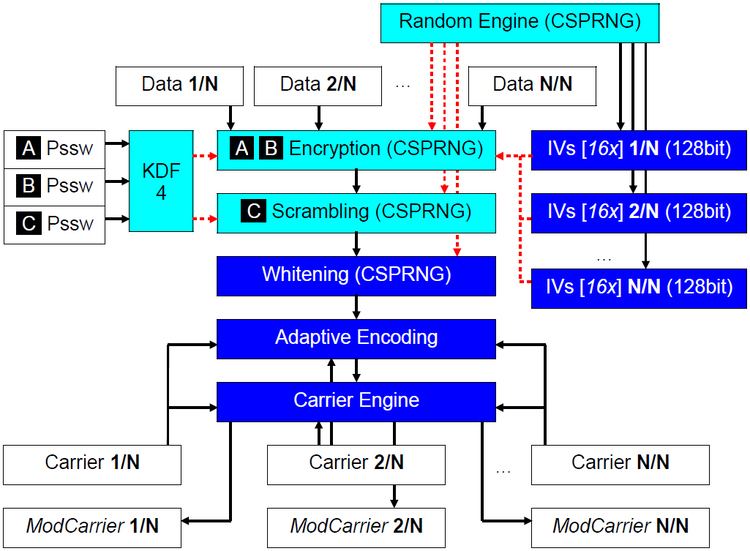 | ||
A steganography software tool allows a user to embed hidden data inside a carrier file, such as an image or video, and later extract that data.
Contents
It is not necessary to conceal the message in the original file at all. Thus, it is not necessary to modify the original file and thus, it is difficult to detect anything. If a given section is subjected to successive bitwise manipulation to generate the cyphertext, then there is no evidence in the original file to show that it is being used to encrypt a file.
Carrier
The carrier is the signal, stream, or data file into which the hidden data is hidden by making subtle modifications. Examples include audio files, image files, documents, and executable files. In practice, the carrier should look and work the same as the original unmodified carrier, and should appear benign to anyone inspecting it.
Certain properties can raise suspicion that a file is carrying hidden data:
It is a cryptographic requirement that the carrier (e.g. photo) is original, not a copy of something publicly available (e.g., downloaded). This is because the publicly available source data could be compared against the version with a hidden message embedded.
There is a weaker requirement that the embedded message not change the carrier's statistics (or other metrics) such that the presence of a message is detectable. For instance, if the least-significant-bits of the red camera-pixel channel of an image has a Gaussian distribution given a constant colored field, simple image steganography which produces a random distribution of these bits could allow discrimination of stego images from unchanged ones.
The sheer volume of modern (ca 2014) and inane high-bandwidth media (e.g., youtube.com, bittorrent sources. ebay, facebook, spam, etc.) provides ample opportunity for covert communication.
Chain
Hidden data may be split among a set of files, producing a carrier chain, which has the property that all the carriers must be available, unmodified, and processed in the correct order in order to retrieve the hidden data. This additional security feature usually is achieved by:
Robustness and cryptography
Steganography tools aim to ensure robustness against modern forensic methods, such as statistical steganalysis. Such robustness may be achieved by a balanced mix of:
If the data is detected, cryptography also helps to minimize the resulting damage, since the data is not exposed, only the fact that a secret was transmitted. The sender may be forced to decrypt the data once it is discovered, but deniable encryption can be leveraged to make the decrypted data appear benign.
Strong steganography software relies on a multi-layered architecture with a deep, documented obfuscation process.
Carrier engine
The carrier engine is the core of any steganography tool. Different file formats are modified in different ways, in order to covertly insert hidden data inside them. Processing algorithms include:
